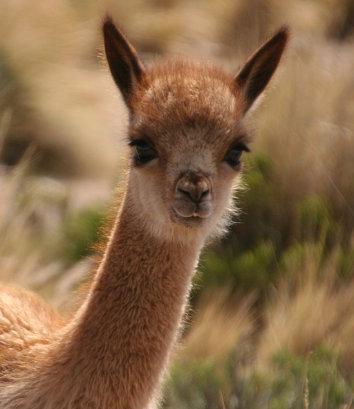
4 minute read
Biosecurity
What is biosecurity and why should I care?
Biosecurity refers to strategies and management prac�ces that lessen biological risk. On a farm, a�en�on to biosecurity is the most important measure to reduce and prevent the introduc�on of diseases or pests of animals and plants. Biosecurity prac�ces also minimize the spread of diseases or pests within a farm system. All alpaca farmers should have a biosecurity plan to help protect their own farm and the broader alpaca industry from the spread of pests and diseases on and between farms Many aspects of biosecurity are common sense, but if these strategies and prac�ces are not enforced consistently, there is a greater risk of introducing animal or plant diseases and facing their accompanying economic costs.
Advertisement
On a farm, a�en�on to biosecurity is the most important measure to reduce and prevent the introduc�on of diseases or pests of animals and plants. Biosecurity prac�ces also minimize the spread of diseases or pests within a farm system. Through implemen�ng on-farm biosecurity prac�ces in your alpaca herd, you'll protect the health of your livestock, limit produc�on losses and help maintain market access for Australia's alpaca producers
One of the biggest threats to Australian livestock agriculture is Foot and Mouth Disease. AAA CEO Amanda Olthof completed FMD Real Time training in Nepal in 2017 as part of a program run by the Food and Agriculture Organisa�on of the United Na�ons (FAO).
As major producers of meat and livestock, including alpacas, an outbreak here in Australia would be devasta�ng. Modelling by CSIRO and ABRAREs es�mates that a mul�state FMD outbreak in Australia could cost the Australian economy up to $50 billion over 10 years, primarily due to trade restric�ons. The social impacts of the disease will also be significant. The severity of these impacts will be influenced not only by the size of the outbreak and �me out of export markets, but also the vulnerability of a community and its ability to recover. Thankfully, Australia has been free of the disease since 1872 due to stringent pre- and postborder measures. However, many of our neighbours in Asia are not as fortunate, with endemic FMD at a resultant high socio-economic impact - a key reason why interna�onal travellers are asked to declare if they have been in contact with livestock when coming through customs at the airport.
A diagnosis of FMD or even a strong suspicion of FMD anywhere in Australia may result in a na�onal livestock ‘stands�ll’, which means no movement of all species of animals suscep�ble to FMD for at least 72 hours, with drama�c consequences for all of us. “We hope it never happens, but Australia has a network of people who are trained and know how to manage FMD outbreaks. A diagnosis of FMD or even a strong suspicion of FMD anywhere in Australia may result in a na�onal livestock ‘stands�ll’, which means no movement of all species of animals suscep�ble to FMD for at least 72 hours, with drama�c consequences for all of us. “We hope it never happens, but Australia has a network of people who are trained and know how to manage FMD outbreaks.
There is a need for strong biosecurity in the alpaca industry and in agriculture in general and the important role that everyone plays in this age of shared responsibility should not be under valued. This can be as simple as correctly filling in forms such as the Na�onal South American Camelid Declara�on and Waybill and following on-farm biosecurity prac�ces for alpaca owners. It is the responsibility of every farmer to have an ac�ve biosecurity plan and communicate any requirements for visitors.
The best defence against pests and diseases is to implement sound biosecurity prac�ces on your farm. Quick and simple measures built into everyday prac�ce will help protect your farm and your future. The six biosecurity essen�als are:
1. Farm inputs - Anything moved onto your property can be a source of pests and diseases for livestock and plants. Monitor animals or plant materials that enter the property, as well as sources of water, feed and fer�liser. –
2. People, vehicles & equipment - If it can move, it can carry diseases, pests and weeds. That’s why people, vehicles and equipment pose a high biosecurity risk and should be managed accordingly.
3. Produc�on prac�ces - Good on-farm hygiene reduces the risk of spreading pests and diseases. Implement simple hygiene prac�ces for feed and water, storage facili�es, livestock husbandry, and waste materials.
4. Feral animals & weeds - Feral animals and weeds can both pose a health risk to livestock. Ensure you monitor and manage these widespread risks to your business.
5. Farm outputs - Responsibility for biosecurity doesn’t end when plant products or animals leave the farm gate. The measures in place on your property support biosecurity in your region.
6. Train, plan and record - ensure staff are well trained, that you can trace where animals have come from and where they go, and keep records of purchases, sales and movements for shows and ma�ngs.
Animal Health Australia’ s Farm Biosecurity program provides resources covering the basics of on-farm biosecurity. Farmers can find out more on the Animal Health Australia website










